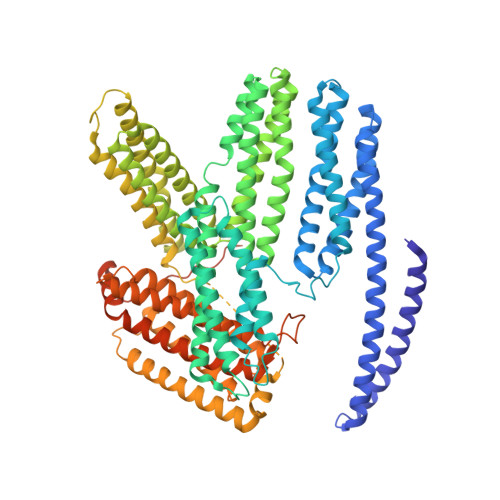Dimer asymmetry defines alpha-catenin interactions.
Rangarajan, E.S., Izard, T.(2013) Nat Struct Mol Biol 20: 188-193
- PubMed: 23292143
- DOI: https://doi.org/10.1038/nsmb.2479
- Primary Citation of Related Structures:
4IGG - PubMed Abstract:
The F-actin-binding cytoskeletal protein α-catenin interacts with β-catenin-cadherin complexes and stabilizes cell-cell junctions. The β-catenin-α-catenin complex cannot bind F-actin, whereas interactions of α-catenin with the cytoskeletal protein vinculin appear to be necessary to stabilize adherens junctions. Here we report the crystal structure of nearly full-length human α-catenin at 3.7-Å resolution. α-catenin forms an asymmetric dimer where the four-helix bundle domains of each subunit engage in distinct intermolecular interactions. This results in a left handshake-like dimer, wherein the two subunits have remarkably different conformations. The crystal structure explains why dimeric α-catenin has a higher affinity for F-actin than does monomeric α-catenin, why the β-catenin-α-catenin complex does not bind F-actin, how activated vinculin links the cadherin-catenin complex to the cytoskeleton and why α-catenin but not inactive vinculin can bind F-actin.
- Department of Cancer Biology, Scripps Research Institute, Jupiter, Florida, USA.
Organizational Affiliation:

















